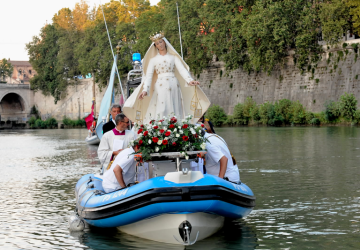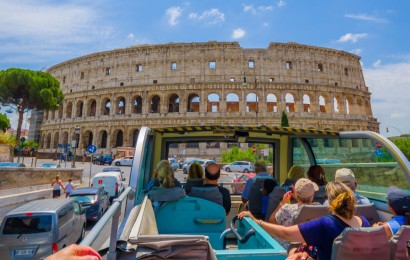The Madonna Fiumarola is a key part of the religious and cultural tradition in the Trastevere neighborhood of Rome. Its history dates back to a legend from 1535. According to this legend, some Corsican fishermen found a cedar wood statue of the Virgin Mary in the Tiber River. The statue, thus named "Madonna Fiumarola", was then donated to the Carmelites of San Crisogono Church in Trastevere, becoming the patron saint of the Trasteverini.
This statue is central to the Festa De Noantri, one of the most important events of the Roman summer. The procession of the Madonna Fiumarola is a highly emotional event for the neighborhood, featuring processions and liturgies to honor their Madonna. Originally, the statue was housed in a chapel built by Cardinal Scipione Borghese, then moved to the church of S. Giovanni dei Genovesi, and finally to its current location at the church of S. Agata.
The Festa De Noantri actually did not begin centuries ago. It was during Fascism that Benito Mussolini decided to celebrate the Madonna del Carmine, and it has since become an annual event in Rome. The statue is carried in procession from the church of Sant'Agata through the streets of Trastevere and then returned to the church, where it remains for about a week. Finally, it is carried in procession on the Tiber, commemorating its discovery in the river.
Tradition dictates that the statue of the Madonna only leaves its residence in the church of S. Agata once a year, on the first Saturday after the feast of the Blessed Virgin of Mount Carmel, celebrated on July 16th. During the procession, the statue is carried on a "machine" and is accompanied by faithful, residents of the neighborhood, and tourists.

